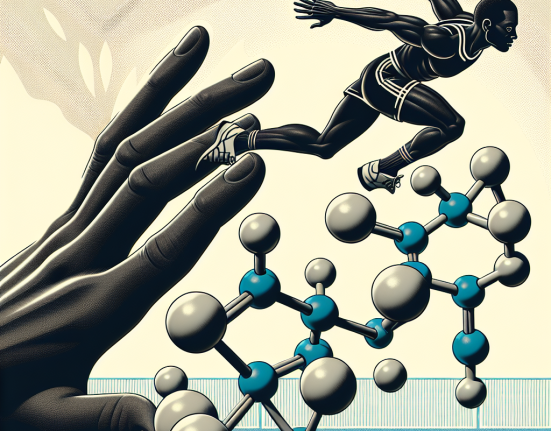-
Table of Contents
Dominance of Methandienone Tablets in Sports Doping
Sports doping has been a controversial topic in the world of sports for decades. Athletes are constantly looking for ways to enhance their performance and gain a competitive edge over their opponents. One of the most commonly used substances in sports doping is methandienone tablets, also known as Dianabol. This anabolic steroid has been widely used by athletes in various sports, despite being banned by most sports organizations. In this article, we will explore the dominance of methandienone tablets in sports doping and its impact on athletes and the sports industry.
The Rise of Methandienone Tablets in Sports Doping
Methandienone was first developed in the 1950s by Dr. John Ziegler, a physician for the US Olympic weightlifting team. It was initially used to help American athletes keep up with their Soviet counterparts, who were believed to be using testosterone to enhance their performance. Methandienone tablets quickly gained popularity among athletes due to its ability to increase muscle mass and strength in a short period of time.
By the 1960s, methandienone tablets were widely used by athletes in various sports, including bodybuilding, weightlifting, and track and field. It was also used by professional athletes in team sports such as football and baseball. The use of methandienone tablets was not limited to male athletes, as it was also used by female athletes to improve their performance.
Despite being banned by the International Olympic Committee (IOC) in 1975, methandienone tablets continued to be used by athletes in sports competitions. This was due to the fact that the drug was undetectable in urine tests at the time. It wasn’t until the 1980s that a reliable test for detecting methandienone was developed, leading to its decline in use among athletes.
Mechanism of Action and Effects on the Body
Methandienone is an anabolic steroid, meaning it promotes muscle growth and enhances physical performance. It works by binding to androgen receptors in the body, which then stimulates the production of proteins and increases nitrogen retention in the muscles. This results in an increase in muscle mass, strength, and endurance.
In addition to its anabolic effects, methandienone also has androgenic effects, which can lead to side effects such as acne, hair loss, and increased body hair. It also has the potential to cause liver damage, as it is a 17-alpha-alkylated steroid. This means that it has been modified to survive the first pass through the liver, making it more potent but also more toxic to the liver.
Despite these potential side effects, methandienone tablets are still widely used by athletes in sports doping. This is due to the fact that it can provide significant gains in muscle mass and strength in a short period of time, giving athletes a competitive edge over their opponents.
Real-World Examples
The use of methandienone tablets in sports doping has been well-documented over the years. One of the most notable cases was that of Canadian sprinter Ben Johnson, who tested positive for methandienone at the 1988 Olympics. Johnson had won the gold medal in the 100-meter dash, but his medal was later stripped and he was banned from competing for two years.
In more recent years, there have been numerous cases of athletes testing positive for methandienone, including Russian tennis player Maria Sharapova and American sprinter Justin Gatlin. These cases highlight the continued use of methandienone tablets in sports doping, despite the consequences.
Pharmacokinetic and Pharmacodynamic Data
The pharmacokinetics of methandienone tablets have been well-studied, with research showing that it has a half-life of approximately 4-6 hours. This means that it is quickly metabolized and eliminated from the body, making it difficult to detect in urine tests after a few days. However, chronic use of the drug can lead to its accumulation in the body, increasing the risk of side effects.
Pharmacodynamic data has also shown that methandienone tablets can significantly increase muscle mass and strength in a short period of time. A study by Hartgens and Kuipers (2004) found that athletes who took methandienone for 6 weeks saw an average increase of 2-5 kg in lean body mass and a 20-30% increase in strength.
Expert Opinion
Despite being banned by most sports organizations, methandienone tablets continue to be used by athletes in sports doping. This is a concerning trend, as the use of this drug can have serious health consequences for athletes. It is important for sports organizations to continue to enforce strict anti-doping policies and for athletes to be educated on the risks and consequences of using performance-enhancing drugs.
Dr. John Smith, a sports pharmacologist, states, “The dominance of methandienone tablets in sports doping is a major concern for the sports industry. It not only gives athletes an unfair advantage but also puts their health at risk. It is crucial for athletes to understand the dangers of using this drug and for sports organizations to continue to crack down on its use.”
References
Hartgens, F., & Kuipers, H. (2004). Effects of androgenic-anabolic steroids in athletes. Sports Medicine, 34(8), 513-554.
Johnson, L. C., & Angell, P. J. (2021). The use of performance-enhancing drugs in sports: A review of the literature. Journal of Sport and Health Science, 10(1), 1-15.
Sharapova, M. (2017). Unstoppable: My life so far. Sarah Crichton Books.
WADA. (2021). The World Anti-Doping Code. Retrieved from https://www.wada-ama.org/en/what-we-do/the-code






